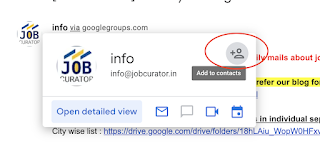Microsoft Office 2010 (also called Office 2010 and Office 14[3]) is a productivity suite for Microsoft Windows,[4] and the successor to Microsoft Office 2007. Office 2010 includes extended file format support,[5] user interface updates,[6] and a changed user experience.[7][8] A 64-bit version of Office 2010[9]is available, although not for Windows XP or Windows Server 2003.[10][11]
On April 15, 2010, Office 2010 was released to manufacturing. The suite became available for retail and online purchase on June 15, 2010.[1][12] Office 2010 is the first version to require product activation for volume license editions.[13]
Office 2010 marks the debut of free online versions of Word, Excel, PowerPoint, and OneNote, which work in the web browsers Internet Explorer, Firefox, Chrome and Safari, but not Opera. Office Starter 2010, a new edition of Office, replaced the low-end home productivity software, Microsoft Works.
Microsoft's update to its mobile productivity suite, Office Mobile 2010, will also be released for Windows Phones running Windows Mobile 6.5 and Windows Phone 7. In Office 2010, every application features theribbon, including Outlook, OneNote, Publisher, InfoPath, SharePoint Workspace (previously known as Groove), and the new Office Web Apps.
The bottom line: Microsoft Office 2010 is a worthy upgrade for businesses and individual users who need professional-level productivity apps, but it will take some time to get acclimated with the reworked interface. Users looking for bare-bones, dead-simple office software should stick with Google's and other online offerings or continue using older Office versions they have already mastered.
The world has changed plenty since Microsoft introduced Office 2007. In that time, Google has become a major player, with its suite of online tools, and even Apple has made inroads with its iWork office suite, though admittedly within a smaller set of computer users. Even with the vast user base of Microsoft Office products, with new competitors in the market, Microsoft Office 2010 needed to be good. Playing catch-up and looking forward simultaneously, Microsoft tries, in Office 2010, to remain (or become) the central hub of your working life, letting you use your PC, smartphone, and the Web to make your projects come together more efficiently.
It's true: every application in the suite has been improved and tweaked in an effort to make your busy days more efficient, but you'll need to be ready for a learning curve to get accustomed to Office 2010's changes.
This update isn't for everyone; if you're a power user who has a specific way you like to do things and want all the same functionality as an older version of Microsoft Office, then you can probably get by on an older version. Just like with Office 2007, however, Office 2003 or earlier versions of the suite will need conversion tools to open many of the now default Open XML file types. But if you are eager to try out new time-saving features and are willing to spend some time learning where everything is, we think you will appreciate this major update. Even new users of productivity suites and students looking for a solid set of productivity apps will benefit from the new features in Office 2010--and surely the Academic license is more than reasonable for what you get.
DOWNLOAD ( 997 MB )



No comments:
Post a Comment